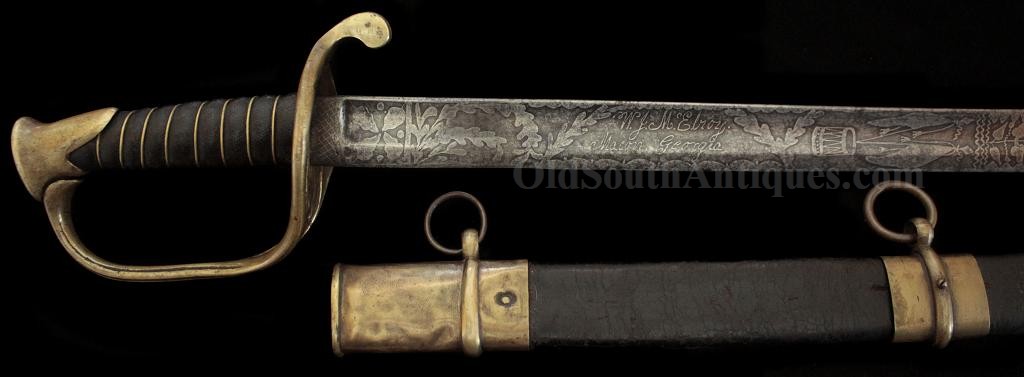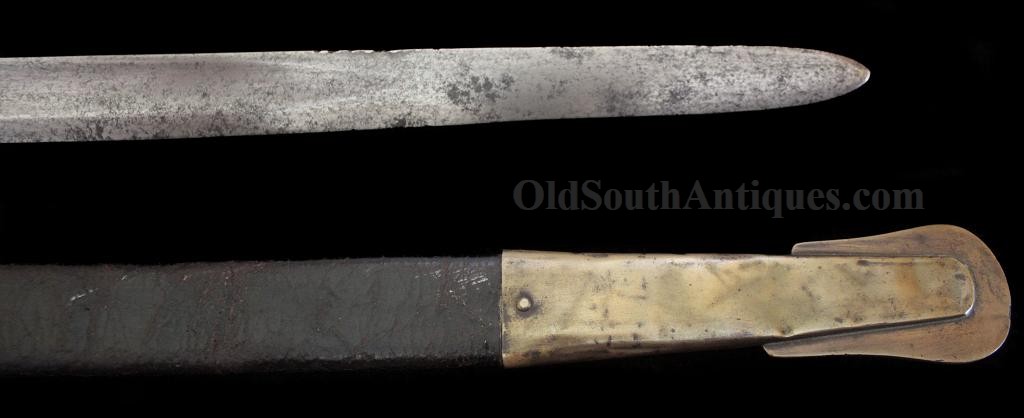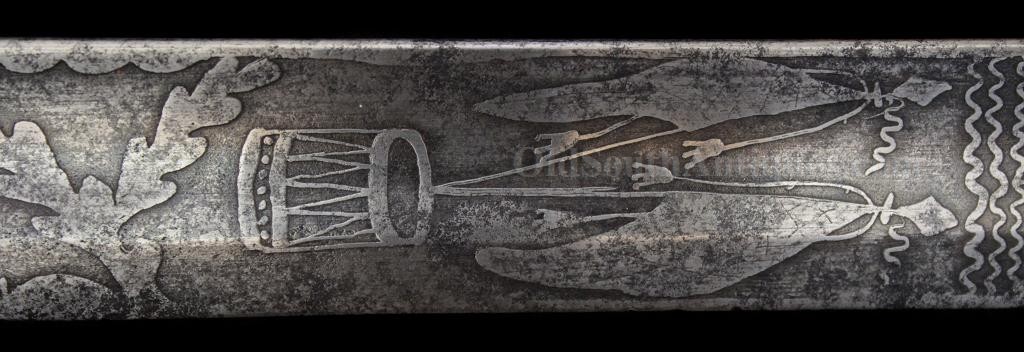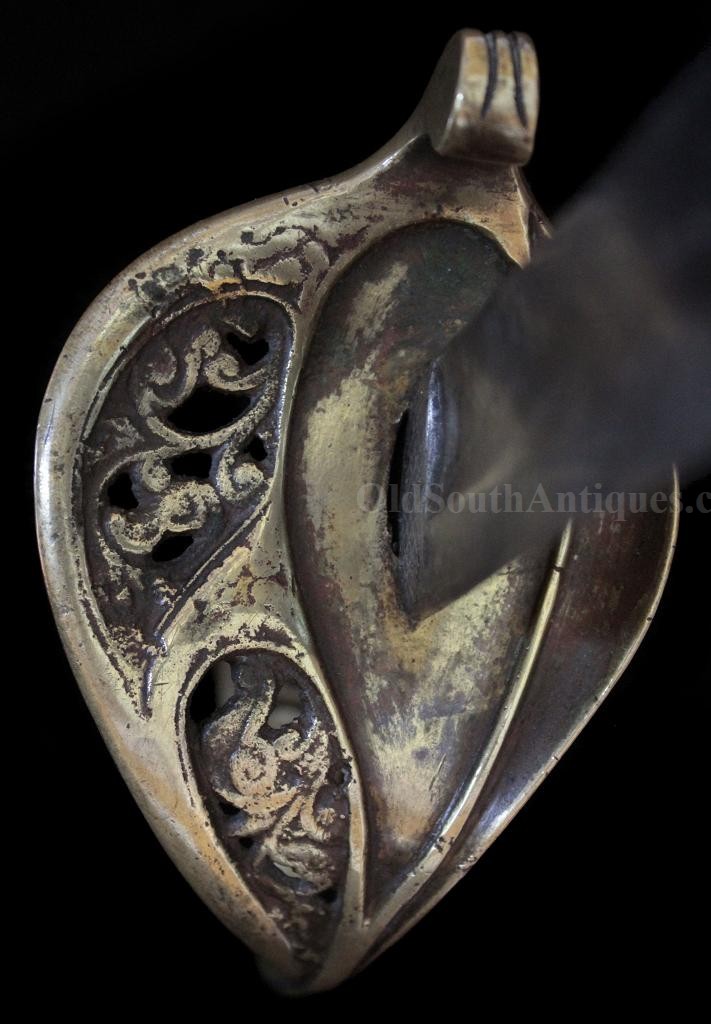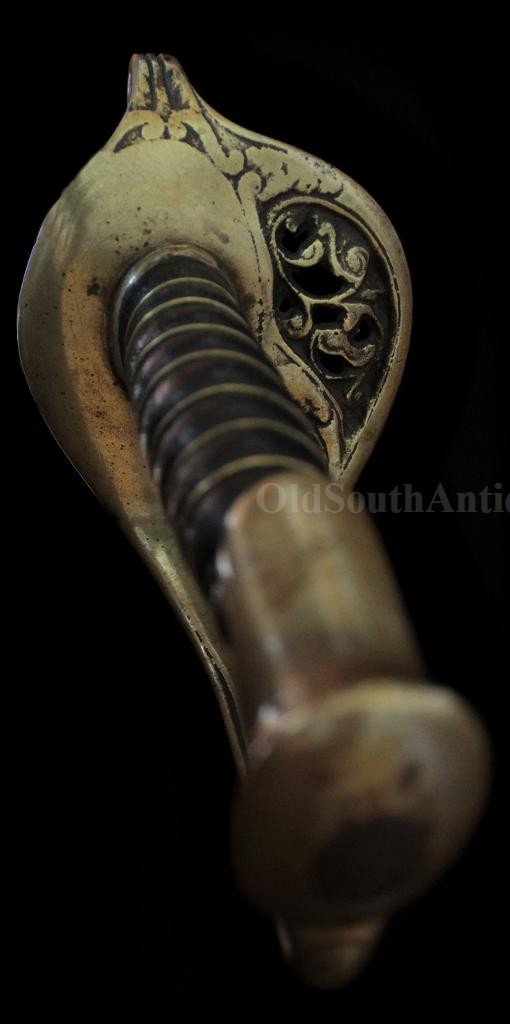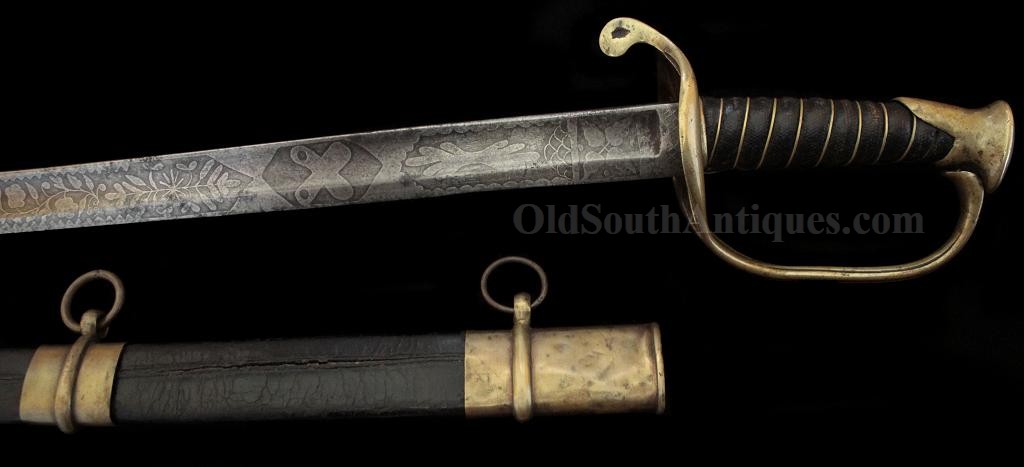
| Catalog | Past Items | Order Info | Terms/Conditions | About Us | Inventory Clearance |
William John McElroy was born in New York City in 1822. It is not known when he moved to the South, but by 1845 he was in Savannah, Georgia working as a tinner, and in 1850 he was a merchant in Macon, Georgia. Apparently, Georgia was very good to McElroy; the 1860 Macon census list him as a 37 year old merchant with $5,500 in real estate and $17,550 of personal estate.
When the War Between the States began, he put his talents to work making war material for his adopted home. Wm J. McElroy & Co was making war accoutrements as early as September, 1861. During the course of the War he made swords, knives, cutlasses, spurs, belts, bits, buckles, brass crossed cannon, cap letters, gun and sword parts. In short, he made anything and everything military that he could produce and sell. He is best known for his beautifully made and etched swords. Because of the quality of the swords he produced and because many of his products carry his name, they are among the most desirable Confederate antiques in the world.
McElroy was a remarkable man in many respects; not only was he an astute, successful business man, he was also a philanthropist. After the War, he donated his property for use as an orphan’s home.
One of his prototypical Confederate foot officer’s swords is shown here. The sword’s blade is deeply etched with the maker’s name and address, crossed artillery, panoply of arms with First National Confederate flags and McElroy’s own vine pattern. Because of McElroy’s deep style of blade etching, his etching is the most pronounced that can be found on any Confederate sword.
The grip and guard of this example are as tight as when it left the manufactory. The painted canvas grip wrap is original, and one hundred percent complete as is the single strand of brass wire wrap.
The sword’s correct and original leather scabbard is in exceptionally fine condition also. There are no weak places, but there are a few inches of thread separation on the reverse side, which I clearly show in the images. The drag and top mount are tight, but the middle mount will move back and forth about an inch.
When the sword first entered the collector’s market many years ago, the brass was nearly black, and it was cleaned it way back then. A pleasing mellow patina has come back since that time.
The sword is in very good condition and, as the pictures will attest, is very attractive.
Copyright © 2025 OldSouthAntiques.com All Rights Reserved.
Privacy Policy | Terms of Use
Powered by Web-Cat Copyright © 1996-2025 GrayCat Systems


